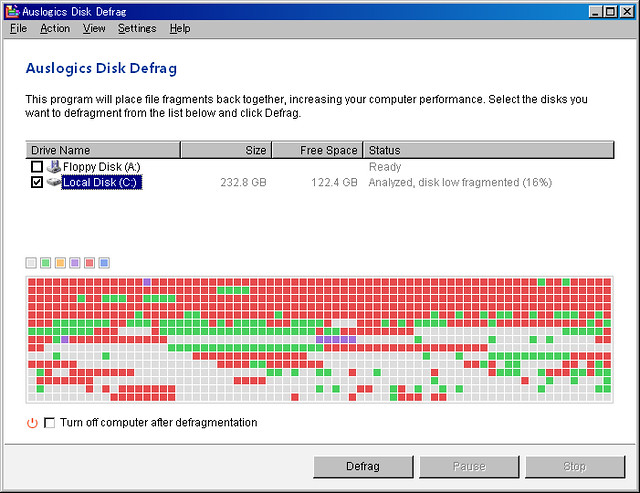Defragging

I don’t see it that often any more, but years ago you regularly had to “defrag” your hard drive. Often through the course of using your computer, the underlying filesystem would become disorganized. On a hard drive, the files on the disk are written in something called “blocks.” These blocks contain the information for the file and are read into your computer memory when you need them. If you leave the file alone and don’t do anything with it, it will remain on the hard drive, waiting for you to access it at some point.
When you do access the file, it will be loaded into memory and if you make changes to the file, then it would be saved to the disk again. If the space the file needs is too big to fit in the original place where it was located on the physical disk because other files are now in the way, then the computer will either have to write the file to a new location or save part of the file back where it was originally and then create a pointer at the end of the original location pointing to where the remaining portion of the file is written on the disk. When you have a lot of files in this state, your hard drive is fragmented.
Defragmenting or “defraging” your hard drive is the process of taking all these file bits scattered all over the physical drive and putting them back together in one long connected line of blocks on the disk. Doing this makes reading and writing the files more efficient and helps speed up the computer operations. While people are not computers, we too need a “defraging” process in our lives.
Defraging for a human is the process where a person has a chance to take all the experience and learning from the day and synthesize it, process it and in some cases play with it in their minds and there are a lot of ways we do this.
The first is just taking time to think. While a person may not look like they are doing anything, taking the time to think through the information a person has and to just “day dream” with it can be very productive. While the fable may not be true, the notion that Issac Newton came up with the idea for gravity while under a tree speaks volumes about the need for leisure and quiet contemplation to discover major insights and have major breakthroughs.
Another way people can defrag their minds is through sleep. Neural scientists talk about the need for sleep and how the process creates connections while we dream. Our brains take the short term experiences and put it into our long term memory. The more sleep and the better it is, the more likely we are to have better long term memories and are better able to access those memories when we need them.
While certainly not the last way a person can defrag their memory, another way people can help build connections between bits of information is through the process of writing and drawing. When a person writes about a topic they are forced to take what they know and express it in a form that invites revisiting the ideas over and over. Writing slows you down and engages different portions of the brain. Instead of just using thoughts you also use your hands and the act of engaging in the physical movement once again builds paths within the brain which lead to better retention of the concepts. It is probably one of the may reasons we have to write so many papers while in school.
While this is certainly not an exhaustive list of ways to create paths in the brain and connect information together, it is a reminder that while we spend a lot of time doing things during the day, taking time to relax and think should be a necessary part of our daily activities.
The image, titled “auslogics_disk_defrag”, was taken by “Manabu Itoh”. You can find it on flickr.

Comments